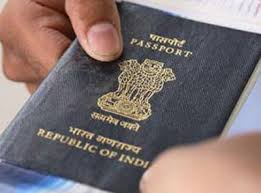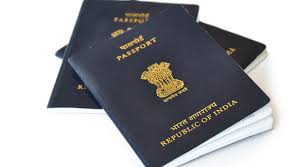In this blog post, Vivek Chattopadhyay, a final year law student of School of Law, KIIT University, describes the process of impounding a passport under the Passports Act, 1967.
Introduction
The Passports Act was enacted to regulate the free movement of citizens departing out of this country. Under Article 21 of the Constitution, though the right to free movement is a given fundamental right, but restricting it is considered a gross violation of Article 14 of the Constitution. The Passports Act was created to regulate this as a means of positive reinforcement by not letting those who may hamper the sovereignty and integrity of the country.
Impounding Of Passports
In India, passports are issued by the Passport Seva Kendra which is the online portal of the Passport Office where after filling up all the relevant details; the user is then directed to his nearest Regional Passport Office to complete the rest of the formalities. But, enough of how to create your passport, this piece pertains to Impounding of passports in general which are provided for under Section 10 (3) of the Passports Act, 1967[1] which reads:
10(3) The passport authority may impound or cause to be impounded or revoke a passport or travel document,—
(a) If the passport authority is satisfied that the holder of the passport or travel document is in wrongful possession thereof;
(b) If the passport or travel document was obtained by the suppression of material information or on the basis of wrong information provided by the holder of the passport or travel document or any other person on his behalf: [Provided that if the holder of such passport obtains another passport, the passport authority shall also impound or cause to be impounded or revoke such other passport.]. [Provided that if the holder of such passport obtains another passport, the passport authority shall also impound or cause to be impounded or revoke such other passport.]”
(c) If the passport authority deems it necessary so to do in the interests of the sovereignty and integrity of India, the security of India, friendly relations of India with any foreign country, or in the interests of the general public;
(d) If the holder of the passport or travel document has, at any time after the issue of the passport or travel document, been convicted by a court in India for any offence involving moral turpitude and sentenced in respect thereof to imprisonment for not less than two years;
(e) If proceedings in respect of an offence alleged to have been committed by the holder of the passport or travel document are pending before a criminal court in India;
(f)If any of the conditions of the passport or travel document has been contravened;
(g) If the holder of the passport or travel document has failed to comply with a notice under sub-section (1) requiring him to deliver up the same;
(h) If it is brought to the notice of the passport authority that a warrant or summons for the appearance, or a warrant for the arrest, of the holder of the passport or travel document, has been issued by a court under any law for the time being in force or if an order prohibiting the departure from India of the holder of the passport or other travel document has been made by any such court and the passport authority is satisfied that a warrant or summons has been so issued, or an order has been so made.
In very rudimentary terms, Section 10 (3) talks about conditions during which a passport may be impounded, like under Sub-section (a) under wrongful possession; (b) when it is obtained through fraud or misrepresentation; (c) if the Passport Office deems it necessary, for preserving friendly relations with other nation states; (d) when a holder of a passport has been convicted of a crime carrying imprisonment over 2 years; (e) when there is an ongoing criminal proceedings against the holder of that passport; (f) if any conditions of issue of passport has been contravened; (g) failure of complying against noticed served under sub-section (1); (h) when it is brought to the notice of the Passport office that a warrant for arrest or an issue of summons has been made against the holder of such passport.
How To Get A Passport Impounded
- Step 01: Find the correct sub-section under which your reason for getting someone’s passport falls under and prepare a written complaint on the basis of that. (For the sake of simplicity, one may refer to the rudimentary version mentioned above for ease of understanding of the legal language so involved).

- Step 02: Compose a written complaint to the Passport Officer commonly called the Passport issuing authority of your Regional Passport Office describing to him the facts and circumstances under which your matter lies and why under which sub-section of Section 10 (3) do you want to get the passport of such person impounded.
- Step 03: Submit the application to your regional passport office. Once done, within a span of 15 days, the Regional Passport Office will summon both the accused (the person whose passport you want to get impounded) and the complainant (you, in this case) to provide statements as to why the person concerned should or should not get his passport impounded. Once the statements have been recorded, the Passport Officer then decides the matter by either impounding or not impounding the concerned passport.
- Step 04 (Optional): If the complainant is not satisfied with the outcome of the process or if the accused wants to appeal, he may do so by appealing before the Chief Passport Officer for final disposal of the matter.
[divider]
Reference:
[1] The Indian Passports Act, 1967, §10(3), https://indiankanoon.org/doc/83644/ (Last accessed on 27-08-2016)
 Serato DJ Crack 2025Serato DJ PRO Crack
Serato DJ Crack 2025Serato DJ PRO Crack











 Allow notifications
Allow notifications



